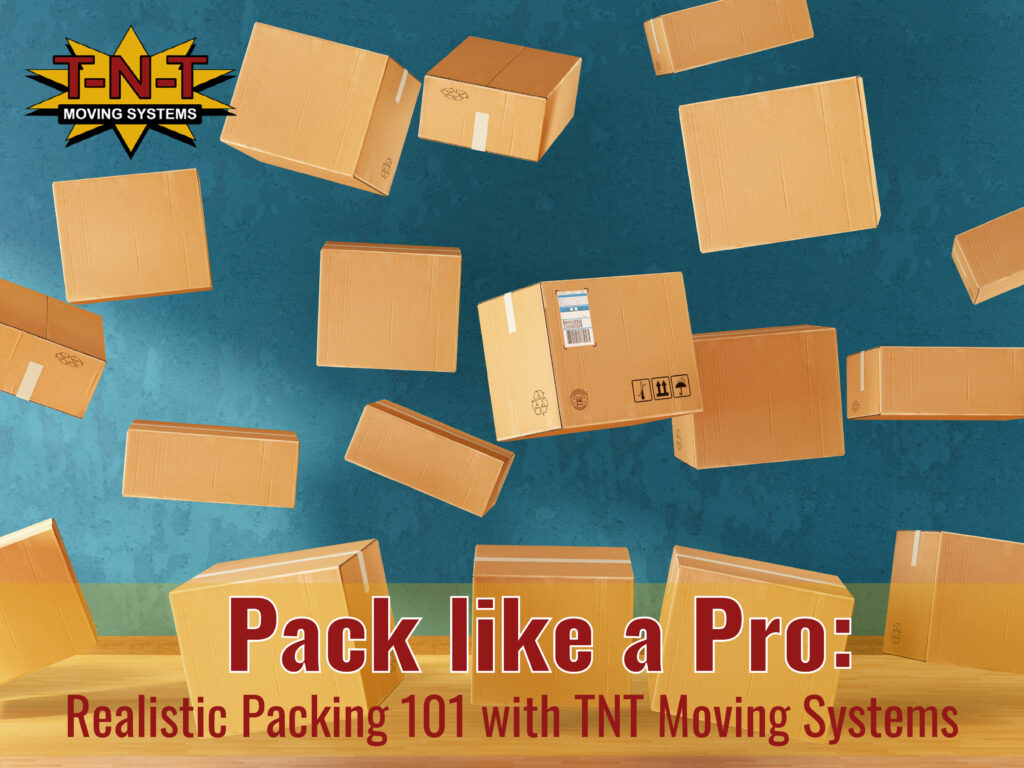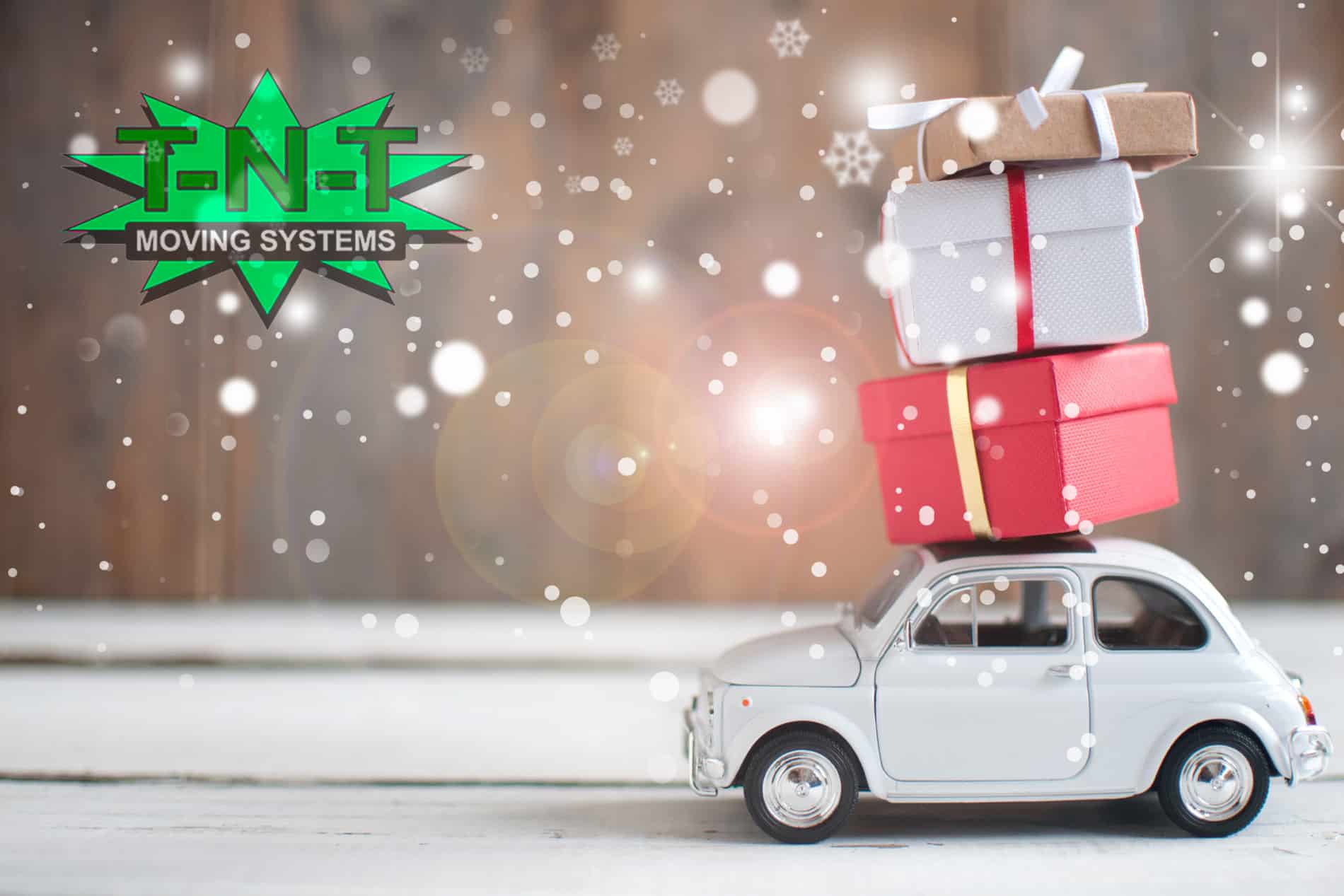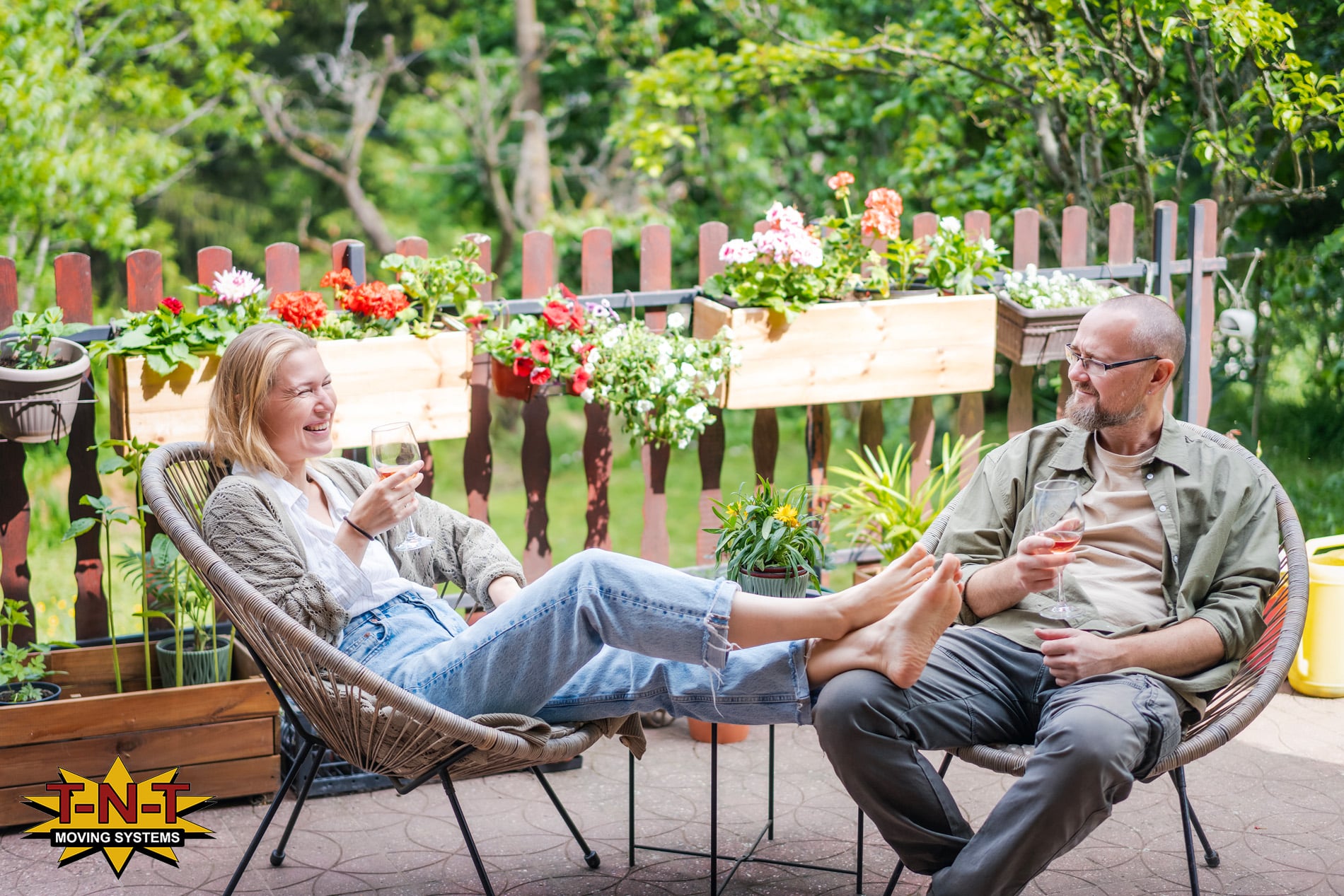Pack like a Pro: Realistic Packing 101 with TNT Moving Systems
 Moving can seem super overwhelming, and making calls about what to pack and how to pack can be even harder! Learn to pack like the professionals with tips from TNT Moving Systems.
Moving can seem super overwhelming, and making calls about what to pack and how to pack can be even harder! Learn to pack like the professionals with tips from TNT Moving Systems.
Make a plan, and stick to it!
Know your moving date, and plan weeks ahead. There’s no set timeline on when you should start packing or how long it might take – it really just depends on the goals you set for yourself. One of the best ways to tackle packing is to divide it into manageable tasks. Start with rooms that are used the least, and start with categories of items that are least-used, leaving the most-used items last. For example, a guest room closet filled with out-of-season items like cold weather gear or swimwear, or a storage area like the basement or attic would be a great place to start. Save the rooms and items you need and use the most toward the moving date.
Need an estimate of how long it will take to pack? The best way to get a feel for how quickly you can pack and go through your items is to test out a room, category, or closet to see how long it takes initially. By getting a sense of your speed and how much effort and time you’re wanting to put in on a daily basis, you can get a better sense of how much work lies ahead. Use your moving date to count backward to determine how much time you’re going to need to pack all of your belongings.
Use various box sizes that fit your packing needs.
Picking the right boxes and getting enough for your move can be overwhelming, especially when there’s a ton of choices online and in-stores. No one wants to run back and forth – so how can you estimate what types of boxes you need and how many you should purchase? We’re here to help!
When starting to pack, it may be tempting to purchase fewer large boxes to throw everything into, rather than an assortment of box sizes or boxes specific to your items. If you’ve packed a lot of items without thought into a large box, then you know the feeling of realizing your mistake when the box is so heavy and cumbersome that it’s impossible to lift!
While it may require more boxes, smaller boxes are better for packing heavy items. Larger boxes are ideal for lightweight items. It helps to know the range of box sizes and roughly how many of each type of boxes you might need for a room. Packing similarly based on the box size can keep your boxes in the same weight range as well, and also prevents larger boxes from breaking when you move them. Cardboard is prone to sagging, so be mindful of the weight limits for the various box sizes.
Standard box sizes:
• Book box: For books, 12”x12”x12” boxes are a perfect size to fill all the way up with books but not become too heavy. They could also be good for computer parts or small electronics and cords. Fine china or small antiques should be packed in either a book or a small box, as you want them secure in a sturdy and compact space.
• Small box: A small box measures around 16”x12”x12: inches, and is perfect for kitchen gadgets, canned food, tools, small electronics like DVDs or CDs, or small fragile items like jewelry. Small boxes are great for packing individual items or dense items. Small boxes can hold up to 65 pounds.
• Medium box: A medium box measures 18”x16”x18’, and is great for items like pots, pans, smaller appliances, clothing, toys, or decorative items. This is the most popular and commonly sized box, as they’re the most versatile; they’re not too large that they’re prone to breaking, they can hold about 65 pounds, and they have a larger volume to fill.
• Large box: A large box measures 18”x18”x2”4 and marks the size of a box that you don’t want to get too heavy; these are great for winter coats, bedding, curtains, purses, disassembled furniture parts, and smaller throw pillows. They can’t hold as much weight, as they’re not as sturdy as smaller boxes, but the benefit of a large box is that their height allows them to carry larger items than the medium box.
• Extra-large box: An extra large box is around 24”x20”x24”, and great for holding big, lightweight items. Think comforters, quilts, blankets, pillows, sports equipment, toys, dog beds, etc. Extra large boxes are the least durable, but hold things that a large box can’t. They’re great for carrying large items that could take up a lot of space or not stay folded up during the move, or items that you don’t want to get dirty during the move.
How many boxes needed based on the room size?

The above chart is a good way to estimate the number of boxes you may need to purchase per room, but you know your stuff better than anyone else. If you have more items than the average person, move up a room size to accommodate. If you’re more of a minimalist then you can likely move down a room size.
Ever picked fun at the person who saves their TV or other electronic boxes? Think again!
The best boxes for your fragile items are the boxes that they came in. Why? Because the boxes that fragile items like electronics or flatscreen TVs come in are packaged in a way that protects them during long, potentially dangerous shipping and transportation times.
If you lack the room to store those boxes or have already thrown them out, worry not! Your local hardware store, moving specialty store, or your movers at TNT Moving Systems can provide you with the right boxes for your items.
Let’s talk about specialty boxes:
Specialty boxes are basically boxes outside your standard square range of small to XL that
• Dish packs: Medium size box that has cardboard partitions designed to hold fragile and breakable items like cups, mugs, vases, and other glassware. The separation means that every piece is protected, and there’s no risk of chipping, scraping, or breakage.
• Wardrobe boxes: Wardrobe boxes are large, tall boxes that have a rod across for hanging clothes, coats, gowns, and dresses. Pro tip from TNT Moving Systems: Make sure you place shoes, belts, and purses on the bottom of the box, or make use of a wardrobe box to transport oddly sized items like artificial plants, garden equipment, or mops and brooms.
• Mattress boxes: As mentioned before, the larger the box, the less durable the box becomes. Like other boxes, the mattress box comes in a variety of sizes to match the size of mattress you have, ranging all the way from a crib and toddler beds to California kings. A mattress box really just serves as a cover to protect your mattress from light damage. Our professional moving team recommends that you use a thick mattress bag to protect your mattress before putting it in the box. The mattress bag will protect your mattress from dust, dirt, moisture, and insects – all things you absolutely do not want your mattress coming into contact with!
• TV boxes: TV boxes are designed to protect flatscreen TVs, and the standard TV box can extend to fit anywhere from a 32” to 70” TV.
• Mirror and picture boxes: These boxes are very thin and flat, come in a variety of standard framing sizes and are specifically designed to hold artwork and mirrors.
• Lamp boxes: Whether you have side table lamps or tall lamps, these boxes are made to protect lamps or other tall items.
• Office or filing boxes: These boxes are typically about the size of a book box and have lids. Subsequently, they are also great for packing books.
Custom boxes
If your move is long distance and space in your car is already full, then custom boxes are a more expensive but worthwhile way to protect your cherished belongings. A custom box is specially created to provide superior protection to untraditionally shaped items, like guitars, guns, or ski and snowboarding equipment. If you plan to travel with these items more in the future, it may be worth the investment to purchase proper cases for those items, but it’s worth knowing that the custom box option exists!
Protecting canvas artwork or other wall hangings
A TV box can actually provide an easy and safe packing solution for moving canvas art or a thin wall hanging. A TV box will protect all sides of your art and not risk any bending or tearing. For valuable or antique art, you can consult an art or framing store to remove your canvas and from the frame, roll it up, and store it in a proper container.
Prepare your boxes.
Tape is your best friend! Reinforce the bottom of every box with tape. If you need an extra cushion, you can line the box with crushed packing paper to support your items.
Packing materials don’t have to be expensive!
You may not need to purchase bubble wrap, packing paper, or expensive XXL Ziploc bags; look around your house and see what you can find. Maybe you’re an Amazon shop-a-holic; start saving those boxes and packing as you have them. You can use trash bags to line boxes or protect fabric items like cushions, pillows, and comforters. The plastic wrap in your kitchen is perfect for wrapping around seals and caps to prevent spilling. Daily newspapers are awesome for box cushioning, wrapping fragile items, and padding. Plastic baggies are great for
Label everything; keep similar items and rooms together.
Break out the Sharpie and label each box with its corresponding move. Not only will your move-in day go smoother, but unpacking will also be a breeze. Make your mark on multiple sides of the box so that it can be seen however it’s being picked up and set down during the moving process. If you also take the time to sort items where they’re going to live in the new house beforehand, you’ll stay so much more organized as you begin to unpack.
Keep valuables and your day-1 boxes or bags separate.
You’ll want to consider storing important documents, expensive electronics, and valuable items with you instead of among all your other boxes in a moving truck. It’s truly better to be safe than sorry when it comes to your valuables and rest assured that your most important belongings are with you at all times.
In turn, there are going to be items you need on your first night at the new place. Whether you make “open-first” boxes or your day-1 bags, put together your most needed items to get through your first day and night at your new house. Include essentials like basic toiletries, towels, a shower curtain, a few kitchen items, and blankets.
Hire professionals to make your packing and move safe, efficient, and worry-free.
At TNT Moving Systems, we have experience working with a range of items on a daily basis and are skilled at specialty packing and care. Hiring professional movers can take a lot of physical work and stress off of your plate, while you focus on what’s most important; getting into your new home. Contact us today about hiring TNT Moving Systems for your next move!




